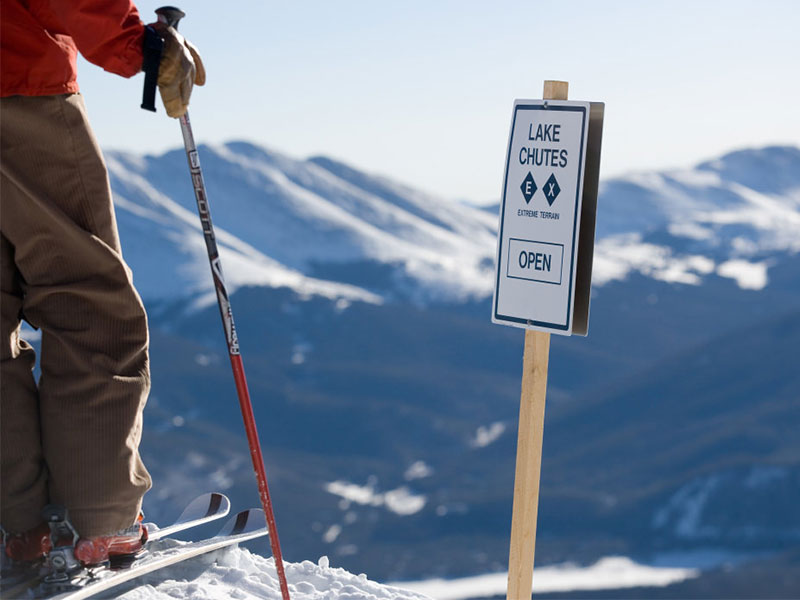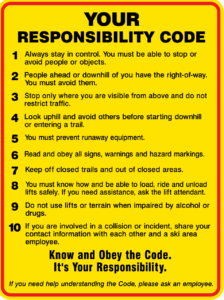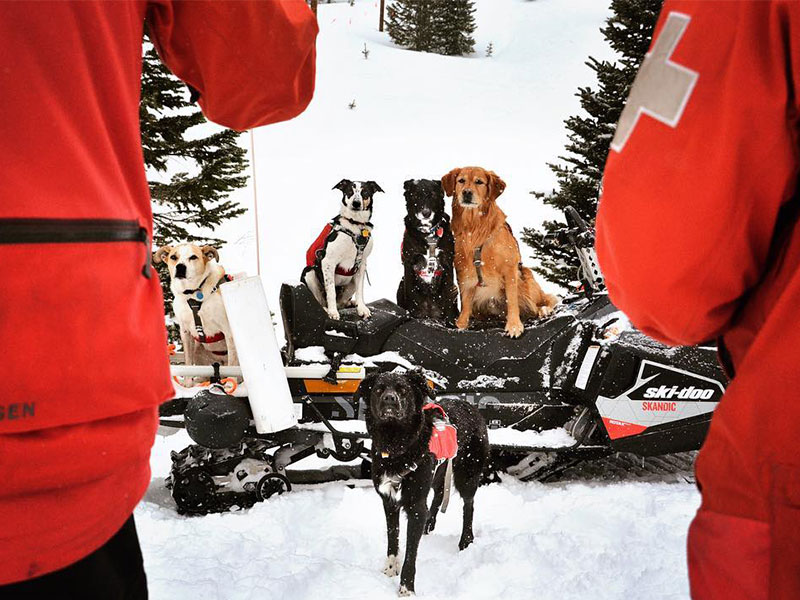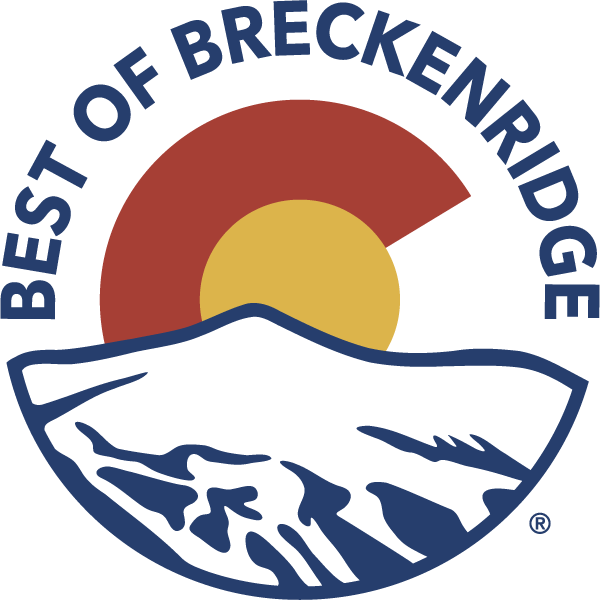We’ve written about ski conditions; now, let’s talk safety. It sounds a bit lame, we know. But “if you french-fry when you’re supposed to pizza, you’re gonna have a bad time.” Now, there’s a LOT to talk about when considering skier safety, and it all starts in your preparations.
Things to Know Before You Go:
- The Town of Breckenridge sits at 9,600 feet above sea level. The base of the ski resort sits at roughly 10,000 feet, and the highest point of peak 8 is 12,998 feet—that’s almost 2.5 miles above sea level! Drink plenty of water (before) and stock up on backpack snacks—your body is working overtime on this vacation. Keep in mind altitude sickness could range from shortness of breath to nausea and vomiting. Consult a doctor if you’re not feeling well!
- To top it off, a higher elevation comes with a few added caveats, such as higher UV exposure. Don’t forget the sunscreen! Rest assured, with an average of 300 sunny days a year and significantly less atmosphere; you’ll still get that epic goggle tan.
- Take a look at our packing guide for an insider scoop on layering!
- Download the Epic Mix App for an interactive trail map, real-time lift lines and status, GPS tracking, and Ski Patrol phone numbers—the combination of which could save a life.
- It’s 2023. Helmets are trendy; a TBI is not.
- Lastly, a skier assumes the risk of any injury to a person or property resulting from any of the inherent dangers and risks of skiing.
On the Hill
Your boots have been properly fitted at Blue River Sports and Mountain Wave, you’re appropriately layered, and the pre-ski jitters are uprising. Now let’s see if leg day at the gym pays off. Here’re a few tips on how to ski like a local with some etiquette:
- At any Vail-owned ski resort, such as our beloved Breckenridge, we have employees looking out for our safety. As you can guess, Breckenridge Ski Patrol uniforms are red, with a large white cross on the back. This is a team of EMS, Paramedics, and trained outdoor Professional Rescuers. If you don’t see them making beautiful S-turns on the slopes, you can find them in Patrol huts on each peak.
- While Patrol is tending to injuries, Mountain Safety is there to prevent them. These guys and gals are in bright yellow jackets and can be found in family and slow zones at the bottom of Peak 8 and Peak 9. They’re out there to remind guests to slow down as they approach highly trafficked intersections, lifts, or base areas. If you’re skiing fast or out of control in these slow zones, you risk having your ski pass revoked for a few days or if you are being completely unsafe, the rest of the season. And although they won’t chase you down the hill, it’s important to remember that you can’t outrun a radio! Instead, you can push your limits on Peak 6, Peak 10, or any upper mountain terrain to avoid run-ins with Mountain Safety and Ski School.
- Signage is there for a reason! Almost every intersection is marked with a trail name and difficulty level. If you pay close enough attention, you’ll see some themes and history in these trail names.
- Arguably more important than the names are the ratings. Green circles are the easiest, blue squares are intermediate, and black diamonds are extreme or most difficult. It seems simple enough! But the reality is, there’s no universal metric to measure the exact difficulty of these runs—it’s subjective to that ski area. Therefore, a blue run in Colorado might be a bit more challenging than a blue run on the East Coast. This can be due to several variables: slope angle, unmarked terrain, the width of the run, terrain characteristics (such as trees), groomed versus ungroomed, snowmaking, and even the ability to access the run.
- For our beginner skiers and riders, you’ll want to stick to low-angle groomed terrain marked green. You can find family zones marked on the trail maps and illuminated on the runs with yellow netting. Keep in mind everyone skiing in these areas is also a beginner!
- Boundaries: as tempting as the white untouched powder looks, that orange rope is also there for a reason, and there’s no telling what that reason is until it’s too late. If you’re not worried about an avalanche, cliff, or even an explosion from avalanche mitigation work, you should at least worry about losing your pass and all the money you’ve spent on it.
- If you’re looking for type two fun and venture towards a backcountry access point, do so knowing and accepting all risks. Although close to the boundary, this terrain should be treated as a backcountry as it’s unpatrolled and unmitigated. Without lift access, rescues from these areas are strenuous and time-consuming. Be sure to prep with the proper tools, knowledge, and skills, and acknowledge all warning signs.
- Interestingly enough, our ski resort is located on National Forest Land. Therefore, drinking and smoking in undesignated areas is not only illegal, but it’s also dangerous—it’s best to save it for happy hour.
- Treat the slopes like you would traffic in a car.
- The patron downhill will always have the right of way—it doesn’t matter if they’re on a snowboard. Always keep your head on a swivel and look before you merge. Although you’re in control, somebody else might not be.
- Lastly, take a gander at the Colorado Skier Responsibility Code—parents, quizzing your kids on the chairlift can be a fun little game to keep everyone on their toes!
After Hours
Somehow you’ve lasted the day; you’re riding 4 O’Clock down to town, carefully, I might add, and the hype is still bubbling through the friend circle. Your Epic Mix app recorded 20,000+ vertical feet, and don’t ya know, leg day at the gym paid off! Now it’s time for a little après ski, perhaps a Swedish massage at Infinity Spa, and some slopeside hot tubs to end your quintessential Colorado ski day.
Shout Out to Our Local Heros
Huge shout out to our first, and secondary responders, and volunteers. Thanks for keeping us safe on and off resort!
- Breckenridge Ski Patrol
- Summit County Rescue Group
- Flight for Life
- Colorado Rapid Avalanche Deployment







